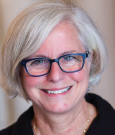This is an exciting time for cancer research. We are beginning to see breakthroughs for patients with advanced melanoma, leukemia, multiple myeloma, lung cancer, and many other forms of cancer. Even so, cancer is projected to increase by about 45% and to become the leading cause of death in America by 2030. Eliminating this threat demands that we have the right expertise in place to maximize the discovery of new treatments and cures.
Physician-Scientists Critical to Multidisciplinary Teamwork
One undeniable new reality is the need for teamwork. As the body of scientific knowledge continues to explode, it is nearly impossible for any single person, no matter how gifted, to command it all. We can, however, turn this challenge into an advantage by building and enabling multidisciplinary teams of researchers in the fight against disease. On these formidable teams, one indispensable member is the physician-scientist.
Physician-scientists are doctors with clinical training and experience who also have a passion for discovery. They have a proud history in medical research. MD researchers have won Nobel prizes, for example, Peyton Rous, MD, who discovered that viruses could cause cancer, and Michael Bishop, MD, and Harold Varmus, MD, who discovered the cellular origin of retroviral oncogenes. Treatment for acute childhood leukemia was revolutionized by Sidney Farber, MD, Emil Frei, MD, and Emil Freireich, MD. The efforts of Brian Druker, MD, Alex Matter, MD, and Charles Sawyers, MD, resulted in the first genetically targeted therapy, imatinib, which has resulted in a dramatic improvement in the treatment of chronic myelogenous leukemia. And there are many other physician-scientists who have led the way to advances in cancer diagnosis and treatment.
Essential to Translational and Clinical Research
Because of their clinical perspective and focus on meaningful life outcomes for their patients, physician-scientists are essential to translational and clinical research. As Andrew I. Schafer, MD, former Chairman of the Department of Medicine at Weill Cornell Medical College and author of The Vanishing Physician-Scientist? has written, “Physician-scientists are in an irreplaceable and pivotal position to communicate effectively and collaborate with PhD basic scientists at one end of the medical research spectrum and with practicing health-care providers at the other end.”
Financial Disincentives Are Considerable
We need more physician-scientists to speed cures from the laboratory bench to the bedside. Unfortunately, their numbers are dwindling, as the structure of our graduate medical education system and shrinking research funding make it ever more difficult to take up research after entering medical school. Financial disincentives are considerable: by the time they have finished medical school and training, most physicians are in their late 20s or early 30s, starting families, buying homes, and often carrying student debt, averaging $150,000. Many feel they cannot responsibly take lower-paying research positions at this time of life, however much they may want to go into research.
Worse still, the opportunity may not be there. “Late bloomers” who discover a passion for research during medical school or their subsequent clinical training now have to compete with PhDs and MD-PhDs for diminished funding and are at a serious disadvantage without an extensive research track record. While we know that many of the great physician-scientists began their research careers at exactly this time, today it is too late to gain the needed research experience, and the door to a research career swings shut.
Damon Runyon Physician-Scientist Training Award
One way to improve the situation is to create a dedicated funding source for physicians who seek the additional training and experience required for a research career. Historically, no funding for this has existed, and the Damon Runyon Cancer Research Foundation believes that this needs to change. Thus, it has created the new Damon Runyon Physician-Scientist Training Award. The first awards will be made in spring 2015, providing would-be physician-scientists with 4 years of salary support and expenses, as well as paying off up to $100,000 in medical school tuition debt. Notably, the award will address disincentives by providing considerably higher support than most research fellowships (ie, $100,000 in the first year, with increases of $10,000 per year for the next 3 years).
This award is unique, but we hope that it will not remain that way. Other private and governmental funders could make a powerful difference in the 21st century fight against serious disease by taking similar steps to encourage and support physician-scientists
Who will be the next physician-scientist to make the groundbreaking discoveries that will change the way we diagnose and treat cancer? How many lives will he or she save? Let’s make sure that a lack of opportunity doesn’t cheat the world of desperately needed answers to these questions.
To learn more, visit http://www.damonrunyon.org/. ■
Lorraine W. Egan is President and CEO, Damon Runyon Cancer Research Foundation in New York, New York. The Damon Runyon Cancer Research Foundation provides funding to young scientists to pursue innovative cancer research. The Foundation’s goals are to identify and fund the best and brightest early-career scientists in cancer research, enable risk-taking on bold new ideas, and accelerate the translation of scientific discoveries into new diagnostic tools and treatments. Damon Runyon is currently funding more than 150 scientists at leading medical centers and research institutions.


